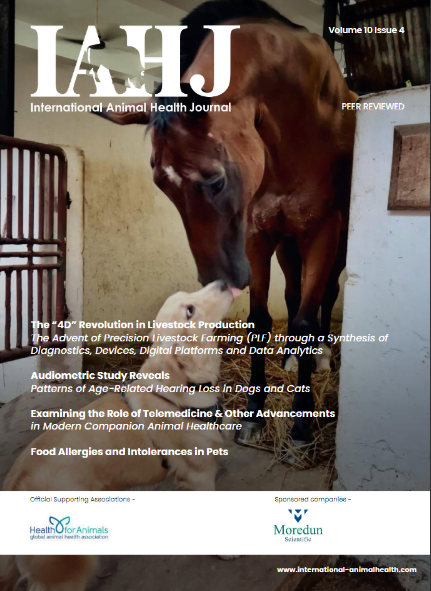Cardiomyopathy Syndrome of farmed Atlantic salmon has become widespread since it was first recognised in Scotland and Norway in the 1980s. The condition is responsible for significant losses, particularly of larger, market-size fish. In Norway it was the most important cause of mortality in 2020 and 2021.1 Mortalities may be chronically elevated and acute mortalities may occur, often associated with a stressful event such as handling sea lice treatment. Affected fish typically represent a large financial investment for the producer and the loss of high-quality fish so close to harvest can be demoralising for farm staff.
Wild Atlantic salmon hatch from eggs laid in freshwater streams and rivers. Fry develop rapidly in freshwater to become smolts which are physiologically able to survive in saltwater. During the seawater phase, they feed and grow, typically undergoing extensive marine migrations before returning to their home river to spawn. Sea trout, likewise, spawn and hatch in freshwater and migrate to sea but tend to remain in coastal areas close to their freshwater origin.
Affected fish may show no external signs other than sudden mortality. Clinical signs, where present, are typically those associated with heart failure and include exophthalmia, ventral skin hemorrhages and raised scales due to oedema. Internally, affected fish may show ascites, dark livers and enlarged hearts often with blood or blood clots in the pericardium.2 Histologically, characteristic changes including inflammatory cell infiltration, cell degeneration and cell necrosis are apparent in the heart muscle.
The primary cause of the condition is understood to be infection with Piscine Myocarditis Virus (PMCV), a double-stranded RNA virus with genetic similarities to members of the family Totiviridae. To date, however, PMCV has not been isolated in pure culture. This limitation continues to hinder efforts to develop effective control measures.
In order to provide a platform to study the condition and evaluate methods for control, Moredun Scientific has recently validated an experimental model of Cardiomyopathy Syndrome in Atlantic salmon post-smolts. The challenge model uses an injectable suspension prepared from heart tissue from clinically affected salmon. The source material was homogenised in a tissue culture medium and purified by filtration and centrifugation. Homogenates were screened by PCR to confirm the presence of PMCV and to exclude interfering viruses causing similar pathologies. The viability of the PMCV preparation was confirmed by the demonstration of the cytopathic effect using a susceptible fish cell line.
In the validation study, groups of 40 fish were challenged by intra-peritoneal injection with the tissue homogenate preparation at three dose levels. The control group was injected with a tissue culture medium only. All experimental fish injected with the homogenate preparation was to be PMCV positive at 4 weeks and 10 weeks post-challenge. All control fish were PMCV negative. Experimentally challenged fish showed no gross signs of cardiomyopathy syndrome and the pathological effect was determined by scoring histopathological changes in the heart (Figure 1) using a scoring scheme developed to assess the degree of cardiac myopathy associated with disease outbreaks on farms.3 The experimental challenge resulted in a substantial increase in heart scores in fish challenged using the tissue homogenate preparation.











